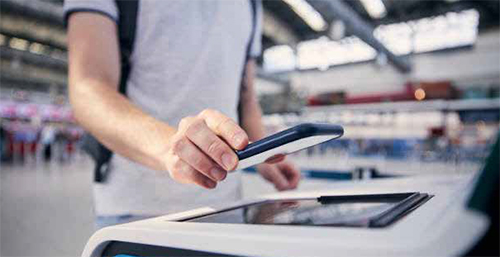Catching up with a digital world
We need to start with a quick history lesson. In 2014, the original eIDAS Regulation was introduced.
In an increasingly digital world, the EU Commission wanted to ensure that citizens could access electronic services smoothly, securely, and efficiently, regardless of the European country they were in.
With the advent of eIDAS, the EU became the first global region with a legal framework for trusted digital transactions. Over the years, consistent authentication standards have been established, and much infrastructure has been built.
So what is significant about eIDAS 2?
With eIDAS 2, the Commission intends to fully realise its vision of a universal, cross-border e-ID.
In the words of Ursula von der Leyen, President of the European Commission, the goal is a :
“secure European e-Identity…that any citizen can use anywhere in Europe…a technology where we can control ourselves what data and how data is used.”
Building on the progress made by the original eIDAS, with eIDAS 2 the Commission is targeting improvement in four key areas:
- The coverage of e-ID schemes
- The acceptance of these schemes by member states
- The use of cross-border authentication
- The user experience of e-ID schemes and services
Introducing the benefits of a Digital ID wallet
Before we explore the benefits of the new EUDI Wallet, let’s define what it is - and what it isn’t.
Many of us already use an OEM wallet, such as those operated by Apple, Samsung, and Google, to store digital payment cards on our mobile phones.
As the name suggests, the EUDI Wallet will perform a similar role for a variety of different schemes, including not only ID but credentials such as driving licences, health records, and digital travel documents.
Significantly, the EUDI Wallet is not likely to replace the ID documents (digital and physical) that EU citizens currently use but rather provide a convenient digital version of them.
At the same time, it is far more than a convenient location on the handset for digital ID, attestations, and entitlements.
Why’s that?

The EUDI Wallet will be highly secure.
It will allow us to share only the personal attributes and data we need and want to share with third parties.
It will allow us to identify, authenticate and prove our entitlements. It will facilitate an ever-growing range of services and use cases in the years ahead.
Member countries will be free to pursue their own designs and functionality.
But every wallet will share some common features and be interoperable right across the EU.
“EU citizens not only expect a high level of security but also convenience…The European Digital Identity Wallets offer a new possibility for them to store and use data for all sorts of services, from checking in at the airport to renting a car. It is about giving a choice to consumers, a European choice…”
Margrethe Vestager, Chair of the Commissioners’ Group for a Europe Fit for the Digital Age
Specifically, the EUDI Wallet will:

- Be fully compliant with existing EU legal frameworks such as the GDPR (General Data Protection Regulation) and Cyber Security Act.
- Feature strong cryptography, offer the highest level of assurance, and meet specific requirements for preventing and managing security breaches.
- Enable selective disclosure of attributes (such as age). The user only needs to share the necessary information for a particular transaction. For example, if you use the wallet to prove your age, you do not need to share other personal details such as date of birth, name, or address.
- Support a vast range of functions and use cases. The details are still being defined at the time of writing, but these are almost certain to include online identification and signatures.
But there’s more.
It is not just citizens who stand to benefit from the wallet.
The pandemic has demonstrated the need for governments to digitalise their services even more clearly. In doing so, they can simultaneously improve convenience, security, and efficiency.
The same applies to private enterprises. A secure, trusted, and EU-wide means of digital identification and authentication opens the door to a new era of seamless service access. Enterprises will be able to enhance the user experience while reducing bureaucracy and overheads.
.png)




